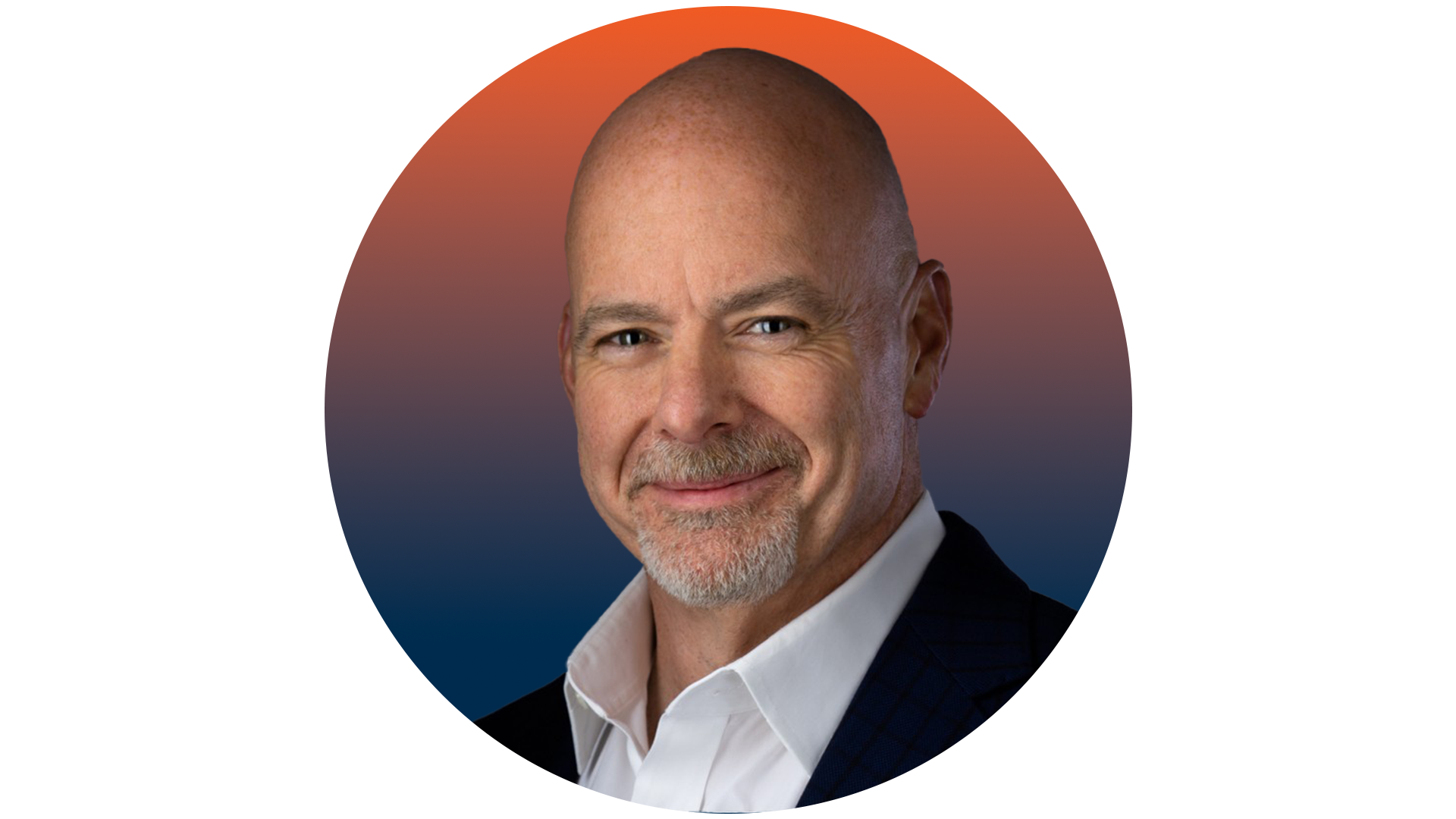
Meet ketteQ's New Chief Revenue Officer: A Conversation with Bob More

We're thrilled to welcome Bob More as ketteQ's new Chief Revenue Officer. Bob is an accomplished enterprise SaaS revenue leader with deep experience helping global manufacturers modernize their supply chain, product lifecycle management, and ERP capabilities.
Over his career, he's held senior go-to-market roles at Indico Data, Reltio, Kinaxis, and SAP. At Kinaxis, Bob played a key role in expanding into new verticals and helping customers like Ford Motor Company and Procter & Gamble transform their supply chain planning capabilities. Across these roles, he has built and scaled high-performing teams that consistently delivered growth and customer value.
I had the pleasure of sitting down with Bob for a candid conversation about his career journey, leadership philosophy, and vision for building a capital-efficient, customer-first go-to-market model at ketteQ.
Q: Bob, give us the quick version of your background and what drew you to ketteQ.
Bob: I've essentially done one thing my whole career: help lead companies buy technology that solves real business problems. I started in applications, including ERP, CRM, PLM, and supply chain, and later moved deep into data management and integration at companies like Informatica, SAP, and Reltio. Most recently, I led revenue at an AI solution provider in the insurance vertical, where we focused on high outcome-based use cases, not AI for AI's sake.
A big turning point for me was my time at Kinaxis, where I helped expand beyond the high-tech sector into new industries like automotive and consumer goods. Landing customers like Ford and P&G gave me a front-row seat to the challenges and opportunities in modern supply chain planning, and that experience will serve me well at ketteQ.
ketteQ checks every box for me. The PolymatiQ™ Agentic AI Engine is the real deal, and importantly, it can run on Salesforce or as a standalone solver engine that sits alongside existing planning tools. That means we don't need to wait for massive rip-and-replace cycles to deliver value. Add in a team that's built modern planning systems before, and it felt like the right place to create something enduring.

Q: You mentioned you had other opportunities on the table. Why did you decide to join ketteQ?
Bob: For me, it came down to four things:
- Technology. The PolymatiQ Agentic AI Engine is unlike anything else in the market. It's flexible enough to run natively on Salesforce and powerful enough to sit on top of other platforms. Customers can adopt us quickly, prove value, and scale without waiting for a massive rip-and-replace project. What excites me is how fast customers can see results; we're talking weeks, not years. That rapid time-to-value translates into quick ROI, and because it's repeatable across use cases, customers can expand with confidence knowing the next implementation will be just as fast and impactful as the first.
- Market Opportunity. Legacy planning systems weren't built for the unprecedented uncertainty supply chains face today. Forecasts are outdated almost as soon as they're created. Disruptions that used to happen once a decade now occur weekly, if not daily. That really forces leaders to abandon old assumptions and embrace a new approach that's agile, adaptive, and built for disruption. That creates an enormous opportunity for ketteQ, and we're already seeing it—companies are switching to ketteQ outright or deploying us alongside their legacy core to get the adaptability they need now.
- Team. The depth of supply chain expertise here is incredible. Many of my colleagues have decades of experience implementing and running planning systems. They know the shortcomings of legacy platforms firsthand, and that's reflected in the way ketteQ was designed from the ground up.
- Board and Advisory Group. The board of directors and our Executive Advisory Board are star-studded with supply chain leaders and visionaries. It's rare to have that caliber of experience guiding a company at this stage, and it gave me a lot of confidence that ketteQ isn't just a good idea, i;'s a movement with momentum.
Put all that together: technology, opportunity, team, and advisors, and it was an easy decision. ketteQ is positioned to lead the next era of supply chain planning, and I wanted to be part of the journey.

Q: What surprised or impressed you most when you learned more about ketteQ?
Bob: My biggest surprise was around PolymatiQ™, our powerful Agentic AI Engine. I knew from speaking with my former Kinaxis colleagues that it was impressive, but I didn't fully realize how flexible it is. PolymatiQ can run natively on Salesforce or sit on top of a customer's legacy system, even a competitor's platform, and deliver immediate value.
That's a massive advantage because we don't have to wait for decade-long rip-and-replace cycles. We can land with a focused use case, prove value, and expand.
The other piece that impressed me was how deeply ketteQ has integrated with the Salesforce multi-cloud ecosystem. It's not just Sales Cloud, it's Service, Manufacturing, Analytics, and Agentforce. That gives customers a planning solution already tied into the systems where their sales and service teams live daily. It's a brilliant architecture, and it makes adoption so much faster.
Q: You've worked in both early-stage startups and global leaders. How does that shape your approach?
Bob: Yes, I've seen how the sausage is made from working at a five-person startup above a lawnmower shop, to the bigs like SAP and Informatica. I love taking enterprise-grade discipline, rigor, repeatability, and governance, without importing the bureaucracy. The goal is to punch above our weight: look and execute like a much larger company while staying fast and customer-obsessed.
Q: What's your vision for a capital-efficient go-to-market at ketteQ?
Bob: Enterprise sales is defined by complexity, not just deal size. There are a dozen real stakeholders from the line of business, IT, security, finance, and third-party partners, and aligning them is complex. The way to stay lean is to automate the 80% of work that soaks up a seller's time but doesn't move the needle: research, note-taking, hygiene, and admin.
We'll give AEs a small "team" of AI agents for prospecting, call synthesis mapped to frameworks like MEDDICC, and value modeling, so reps spend cycles on insight, not busywork. My job is to build clear plays, shared language, and operating rhythms that make success repeatable without killing creativity. Think high discipline, low drag.

Q: Where do you believe supply chain leaders feel the most pain right now?
Bob: Disruption is now the baseline. Forecasts age out in hours. The ash cloud over Iceland used to be a once-in-a-decade shock; now events of similar impact hit weekly. Most legacy architectures weren't engineered for that world.
Winners will be the companies that can spin up and evaluate many scenarios quickly, pick the best move, and execute with speed and confidence. That's why I'm excited about PolymatiQ: it's built for adaptive, multi-scenario planning and for meeting customers where they are, on Salesforce, alongside a legacy planning suite, or as a focused point solution that scales.
Q: Which technology excites you most about the future of the supply chain?
Bob: Without question, it's AI. The horizontal AI battle, who has the biggest general-purpose model, has already been won. The real opportunity is vertical and application-specific AI, where you apply those capabilities to solve deep industry problems like supply chain planning.
Legacy supply chain planning systems carry a lot of technical debt and were never designed to take advantage of today's advanced technologies. That's where ketteQ is different. Our open architecture was specifically built to plug into innovations like machine learning and agentic AI quickly, without years of reengineering. It means we can deliver adaptive planning that's smarter, faster, and more scalable than anything that came before.

Q: You mentioned PolymatiQ can run beyond Salesforce. Why does that matter to customers?
Bob: It lets us land where the value is obvious. If a customer has a planning system, they're not ready to replace, we can overlay PolymatiQ to solve a specific problem like service parts inventory or promise-date accuracy, prove value in weeks, then wrap and expand. It de-risks the decision and shortens time-to-impact.
At the same time, being Salesforce-native where it fits gives us massive advantages: a world-class platform, less tech debt, and the ability to tap Agentforce for collaboration and presentation layers. We can focus our innovation on the solver engine and outcomes.
Q: What does "customer-first execution with board-level discipline" look like in practice?
Bob: Start with the business problem and stay with it. What's the cost of doing nothing? What revenue, margin, or cash benefits are on the table now? Then, align product, marketing, and sales with that same North Star. I'm big on value engineering, building a defensible business case, and verifying value realized post-sale. It keeps us honest, and it earns the right to expand.
Q: You've built and scaled a lot of teams. How would you describe your leadership style?
Bob: Transparent and empowering. Hire great people who fit the stage. Set clear expectations. Remove roadblocks. I'm hands-on where it matters with customer conversations, deal strategy, and coaching, but I don't believe in micromanagement. I'm also passionate about developing talent. The next generation should inherit the craft of enterprise selling and a toolkit that captures the pattern recognition from the veteran members of our team and then bake it into our process and our AI agents.

Q: There's a lot of talk about "autonomous planning." What's your take?
Bob: Autonomy isn't a switch; it's a spectrum. The prerequisites are solid data and an advanced solver that can quickly explore a vast possibility space. From there, autonomy grows with trust: planners collaborate with the system, watch it make good calls, and widen the guardrails. PolymatiQ was designed for that journey: fast scenario generation, explainable recommendations, and measurable outcomes that build confidence.
Q: What will success look like for you in the first year?
Bob: Three things:
- Proven, repeatable land-and-expand motions with short time-to-value deals we can run in parallel.
- A disciplined operating cadence to include forecast hygiene, deal reviews tied to value, and tight alignment with product and marketing.
- Customer stories with quantified outcomes like promise-date accuracy, on-time delivery, inventory turns, and revenue lift. If we can point to a set of customers and say "we helped them move these needles," the rest follows.
Q: Why ketteQ, and why now?
Bob: The timing is perfect. The market is demanding faster value and more intelligent planning. ketteQ has the engine, the platform options, and the team to set a new standard for evaluating and deploying planning platforms. We're not burdened by legacy. We can build the right go-to-market from a clean slate and scale it with AI. That's rare—and it's why I'm here.
Final Thoughts
When talking with Bob, I noticed that what struck me most was his clarity of thought and his balance of big-picture strategy with hands-on execution. He understands supply chain leaders' challenges because he's lived them, and he sees exactly how technology, talent, and teamwork come together to solve them.
With Bob as CRO, I'm confident that ketteQ is positioned to grow and redefine the future of supply chain planning. We're thrilled to have him on board and can't wait to see the impact he'll make.





